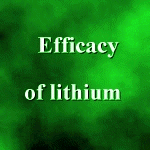
Reprinted from American Journal of Psychiatry 1969 125 1131
Need for careful evaluation of lithium
B. BLACKWELL, M.D.
The editorial "Lithium comes into its own" by Dr Nathan S Kline (October issue of the Journal) will be highly prized by collectors of original enthusiasms tempered by subsequent experience. Only time will show whether your author's eulogy earns him the fate his analogy deserves - to join Cinderella's fairy godmother in the pages of mythology. To transform "just plain old lithium" into the elixir of life on the evidence available is an achievement second only to converting a pumpkin into a stagecoach.
Doubtless, Dr Kline's recollections of the Royal Medico-Psychological Association meeting in Plymouth are as inexact as mine are, although both merit consideration. I recall his exuberant certainty that clinical impression could replace controlled evaluation, a fact your readers may take into account when weighing the evidence. Most of this is now published; but while Angst's work (also presented at this meeting) was certainly a "brilliant statistical analysis", it was also a study comparing small numbers of unmatched patients treated in different centres and followed for relatively short periods.
Before joining the lithium crowd, your readers might ponder the lessons to be learned from the honest, well-intentioned enthusiasts who championed the ducking stool, purging, bleeding, and even insulin. They and their patients learned the long, hard way the need for proper controlled evaluation of therapy in psychiatry.
I have still not treated a patient with lithium, but I hope I can evaluate evidence. This common dilemma confronts all of us who work in research, industry, or even the Food and Drug Administration. A little detachment may perhaps be of assistance.